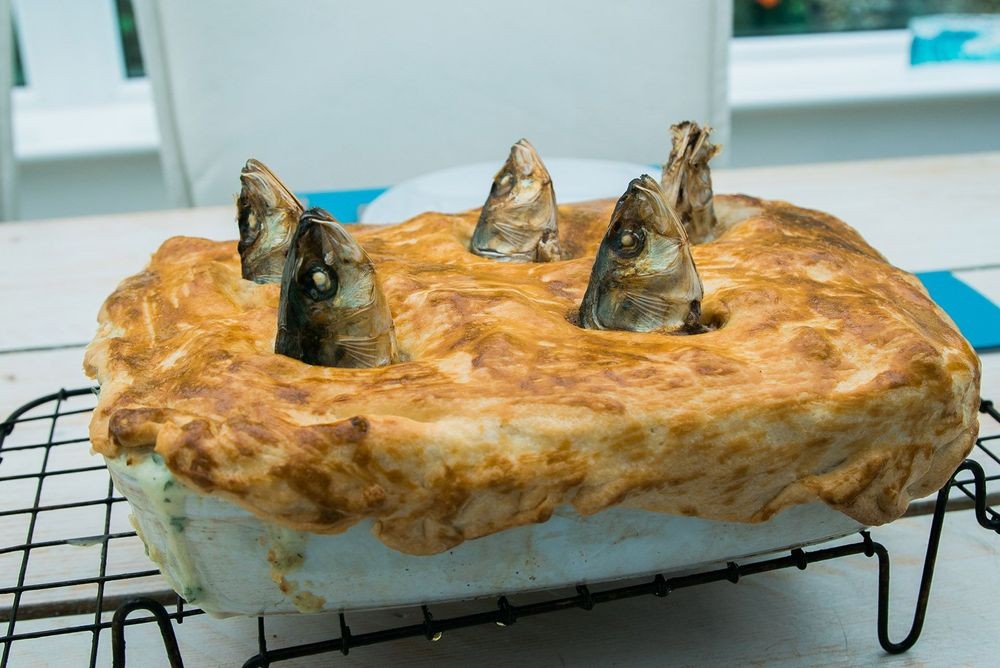Scotland: Haunting Images Of A 30-Year-Old Abandoned House
Images from inside an abandoned home give a snapshot of the lives of the former occupants with pictures, furniture, and antiques still sitting pretty.
The incredible pictures of the Scottish house, which has been abandoned since 1995, show a retro living room featuring an armchair, sofa, lamp, and a fireplace, according to Mirror. Though intact, the furniture could be seen gradually succumbing to nature, as wallpaper peeled from the walls and mold sprouted from the sofas.
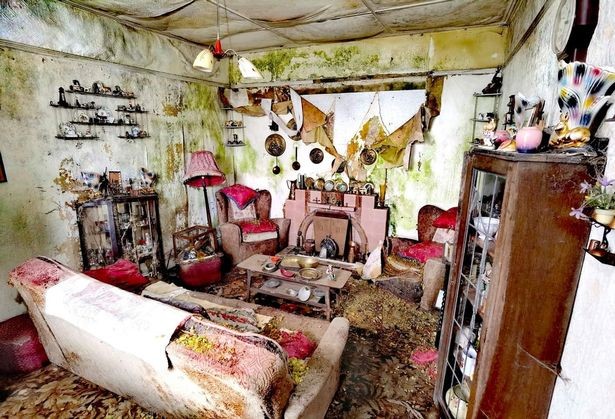 |
| Photo: The Mirror |
In another, a wall-mounted shelf bursting with abandoned trinkets, including a wooden lighthouse thermometer and porcelain figurines could be seen. The photographs were taken by urban explorer No Limits Urbex from Manchester, UK, who documents their adventures at @nolimitsurbex. They used a Nikon Coolpix p1000 camera to capture the shots at an abandoned cottage in Inverness, Scotland.
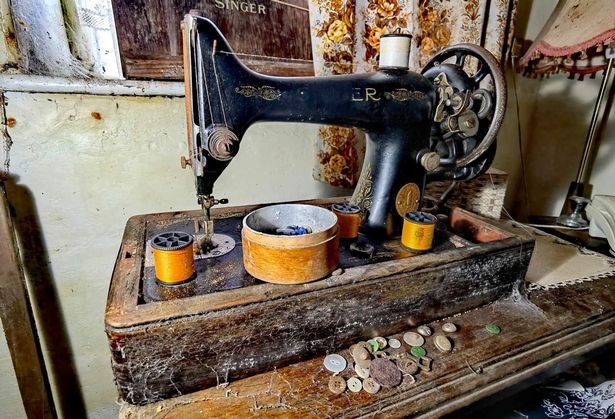 |
| The Singer sewing machine was still set up, ready to sew, with thread and buttons ( Image: @nolimits urbex/mediadrumworld.c) |
Speaking about how the project came about, the photographer behind @nolimitsurbex, said he came across the cottage after some extensive land registry research and packed his bags to make the trip soon after.
"Situated on a mountainside in the middle of Scotland this lovely idyllic cottage had been left to decay for the last three decades,” they said. "After the death of the last remaining family member in 1995 the home was seized by the local authorities so it didn't fall into disrepair and become an eyesore."
The Housing Act 2004 allows councils to take ownership of properties and intervene to stop abandoned properties from being squatted or vandalized.
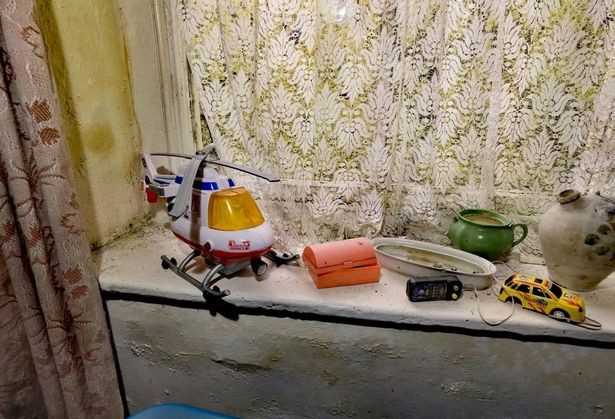 |
| More children's toys were found around the property like this helicopter and car ( Image: @nolimits urbex/mediadrumworld.c) |
Other than a little bit of interior weather damage, the cottage has remained largely intact. The photographer said it had been left “littered with antique quirkiness” with everything seeming to have its own place. "It had been left in a state of suspended animation with even the wedding pictures still on display,” they said.
Photographers dubbed 'urban explorers' have long been scouting out homes that have been abandoned, documenting the houses and sharing the eerie photographs online.
Earlier this year The Mirror reported on a home found abandoned in East Yorkshire, which has been unoccupied for years and features fascinating treasures inside.
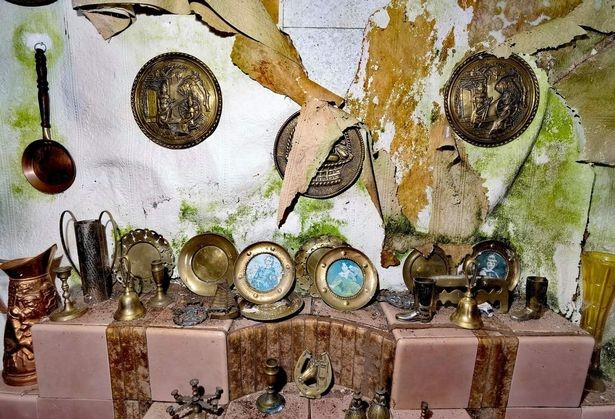 |
| Decorative plates, jugs, bells, pans and more furnished the mantelpiece. ( Image: @nolimits urbex/mediadrumworld.c) |
Frozen in time, the property, known locally as the Horseman's House is in Ousefleet near Goole, could be mistaken for the setting of a Stephen King horror movie. Dozens of horse trinkets line the shelves of long-forgotten rooms, along with yellowing piles of books, stained mugs, and frayed pictures of horses all over the walls reported Yorkshire Live. The house, in Ousefleet in Goole, was abandoned and has not been occupied since meaning that the house is perfectly preserved since its previous occupant left.
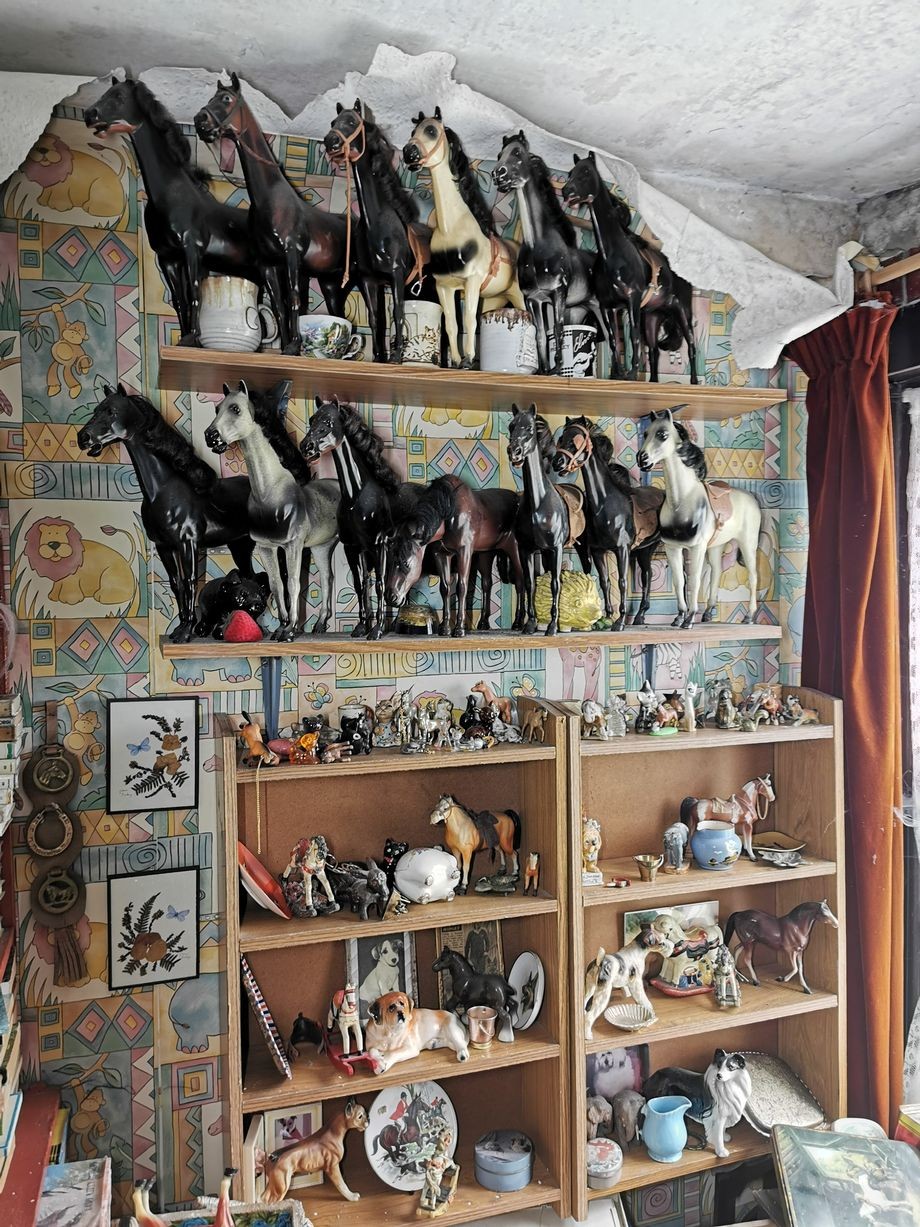 |
| The house is full of horse-related decorations (Image: Kyle Urbex) |
Inside, the house is full of animal-related trinkets and décor, including dozens of horse figures and photos, and a box of stuffed owls. Kyle Urbex, who took photos of the house, said: “It's locally dubbed the horse man's house due to the vast collection of horse memorabilia such as figures. Pictures. Posters. All horse-related.”
“Once inside I was stunned how it had been frozen in time due to the location it's in. It isn't surprising either as it's in a small village on the outskirts of Ousefleet in Goole.
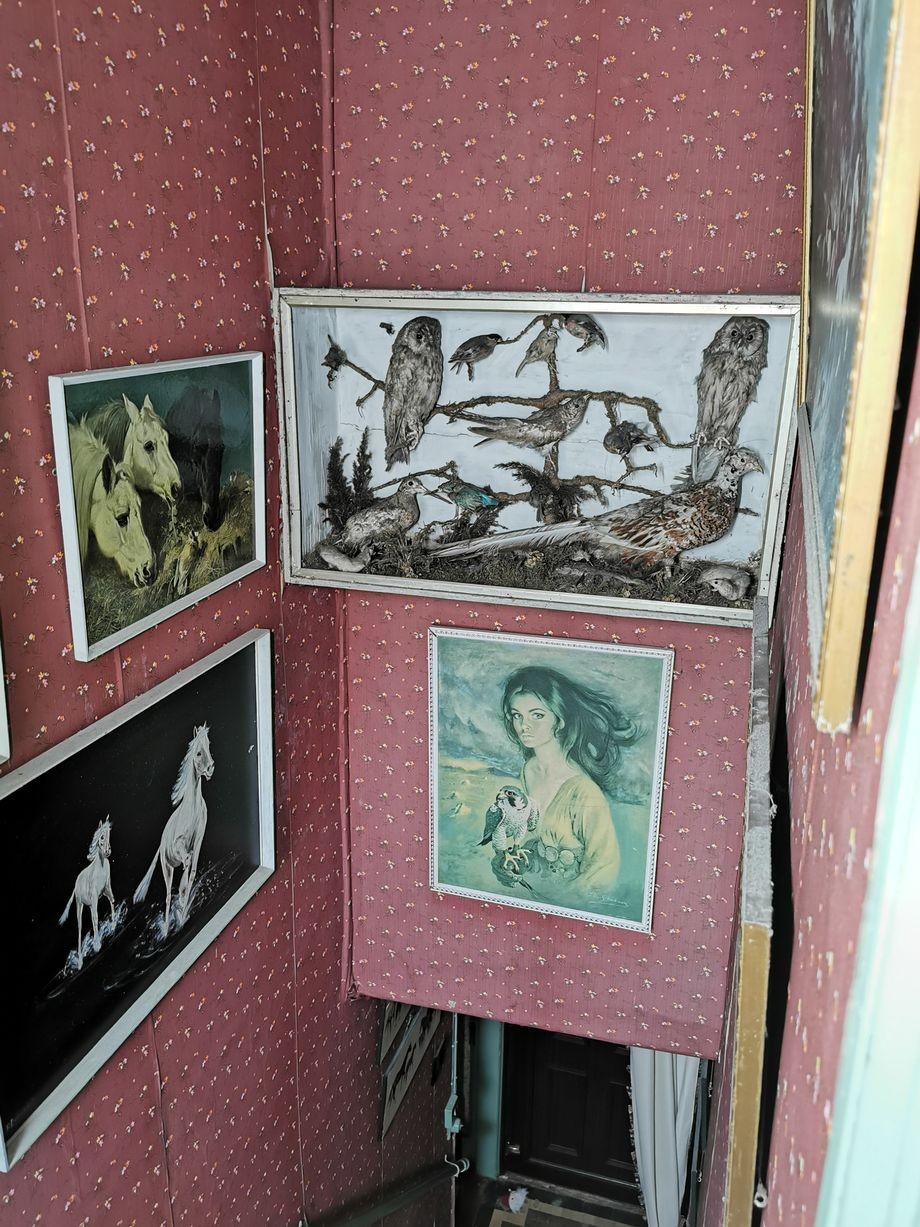 |
| The house contains a box of stuffed birds (Image: Kyle Urbex) |
“Inside I found everything ranging from brass clinging to the walls, horse figures on a shelf in the upper bedroom, old bread rolls scattered across the floor, and other little trinkets and ornaments. “Overall I quite enjoyed the explore wondering what must have happened for a house to be left in such a frozen in time state. It was an amazing experience.”
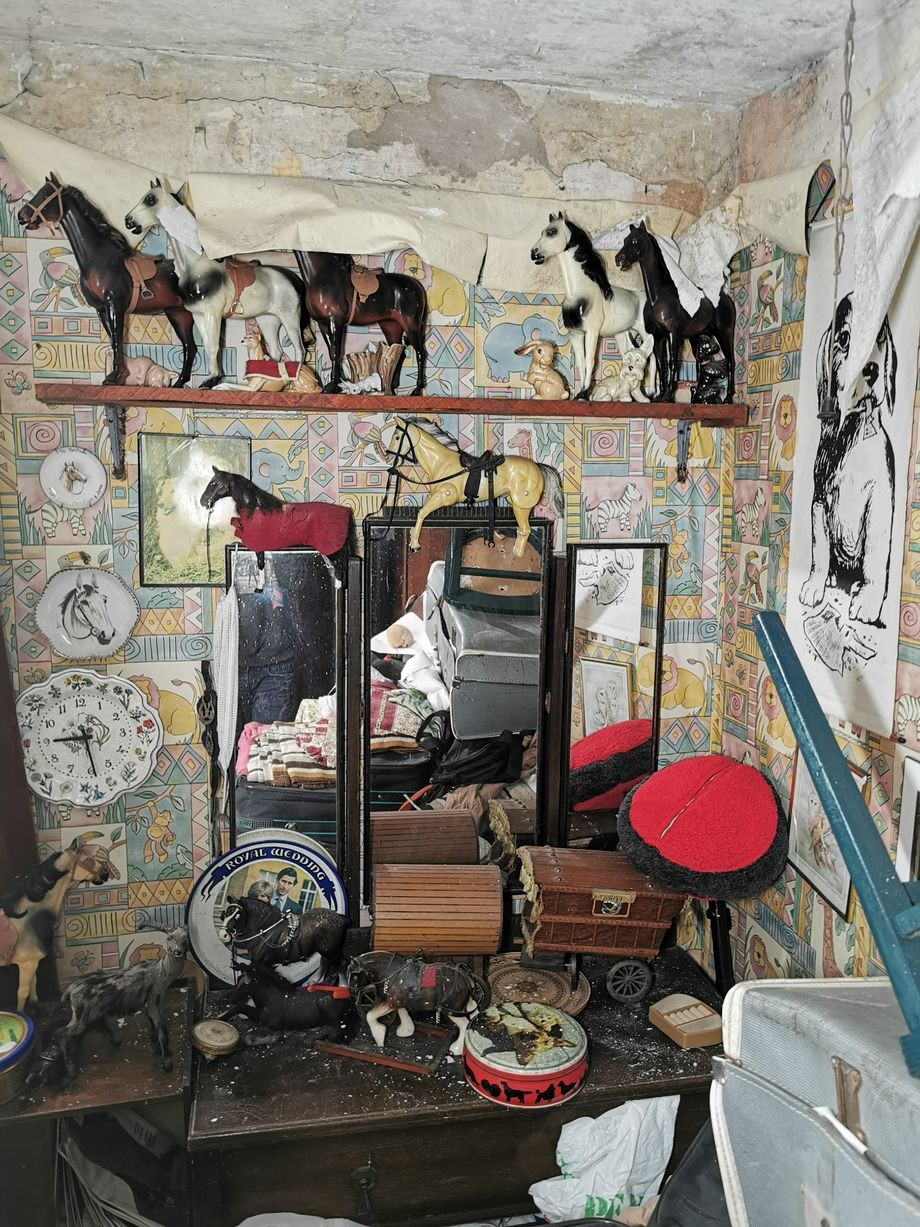 |
| The house is known locally as the 'horse man's house' (Image: Kyle Urbex) |
Scotland's most incredible abandoned buildings
With such a rich history of architecture and building design, it's no wonder Scotland is filled with an impressive array of incredible buildings and spaces.
1. Lennox Castle Hospital
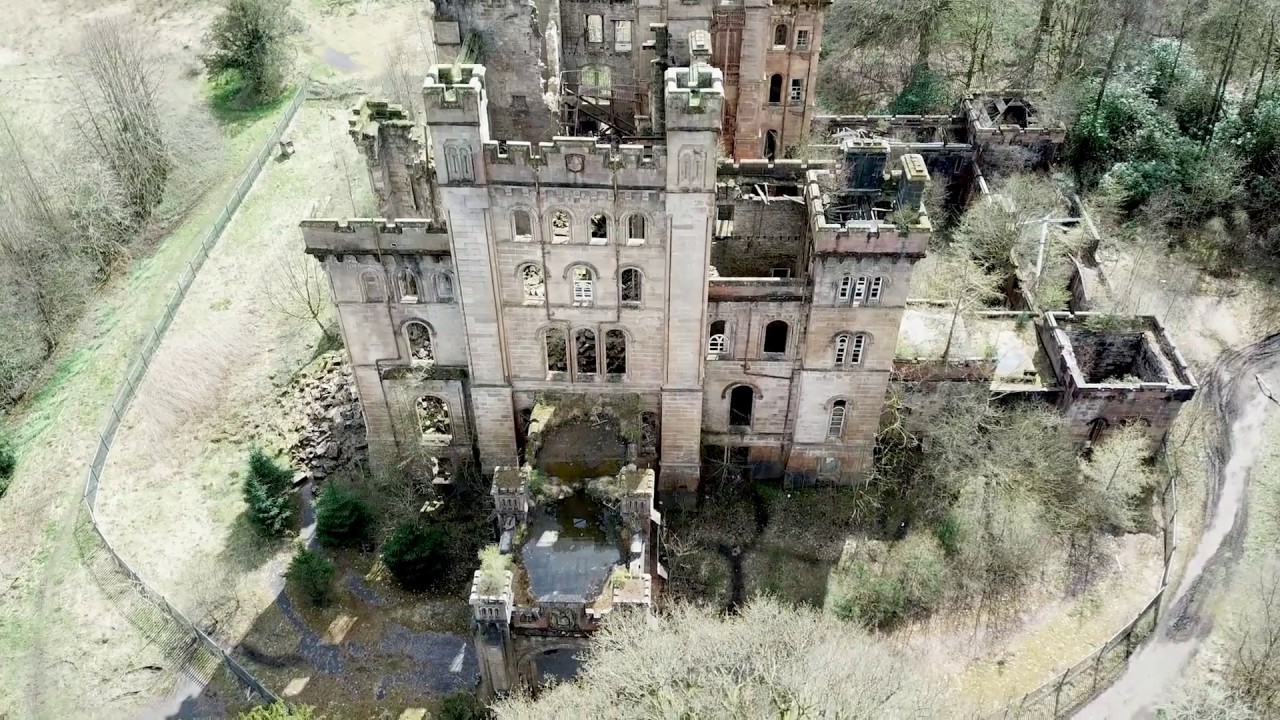 |
| Photo: YouTube |
The castle ruins in Lennoxtown, Glasgow, Scotland, are a great draw to urban explorers, but not many people are aware of the long and infamous history of this castle-turned-hospital. The large three-story building was designed by architect David Hamilton in 1837. His design also incorporated a tower five stories high, and the entrance was a large porch on the north side. The castle was built in a neo-Norman style of red sandstone, and construction took four years. The first owner was John Lennox Kincaid and his family. During World War I, the family mansion was converted into a military hospital.
In 1925, the Glasgow City Council recognized the need for a new psychiatric hospital, and within a short time, a plan was developed to create the largest and best-equipped institution of its kind in the entire country. Two years later, Glasgow Corporation purchased Lennox Castle for this very purpose. The cost of the castle itself and a surrounding 494 hectares (1,222 acres) of land amounted to £25,000. However, the final cost of transforming the former castle into a hospital was £1.25 million.
The official opening of Lennox Castle Certified Institution for Mental Defectives took place in 1936. At that time, it was considered a thoroughly modern hospital with a capacity for 1,200 patients. There were twenty dormitories for male and female patients. Each dormitory could accommodate about 60 people. The men’s and women’s sections had their own canteens, kitchen, and workshops. There was also an administration block, forty houses to provide housing for married staff, and a visitors’ tearoom. The castle was used to house patients while the modern hospital was built, after which it became a home for nurses.
In addition to these facilities, there was a central auditorium – a large hall with a stage and equipment for film screenings. When shows and films were not being put on, the hall could also be used as a place of rest. In 1992, the castle was placed on the Buildings At Risk Register in Scotland. It had been vacated by the hospital staff in 1987. In the 1990s, plans to close the hospital began to take shape. Patients were transferred to more modern psychiatric hospitals or were reintegrated into the local community. Finally, Lennox Castle Hospital was closed in 2002, and by 2004, only the original building was left standing as all the other buildings had been demolished.
2. Dunalastair House
The two-story Baronial mansion was built on the site of two previous grand buildings and was designed by the same architect who designed many prestigious buildings in Perthshire and the surrounding areas, Andrew Heiton. Another house originally owned by the Jacobite chieftain Alexander Robertson of Struan, stood on the site, destroyed by fire after the 1745 uprising, it was replaced by a second mansion known as Mount Alexander.
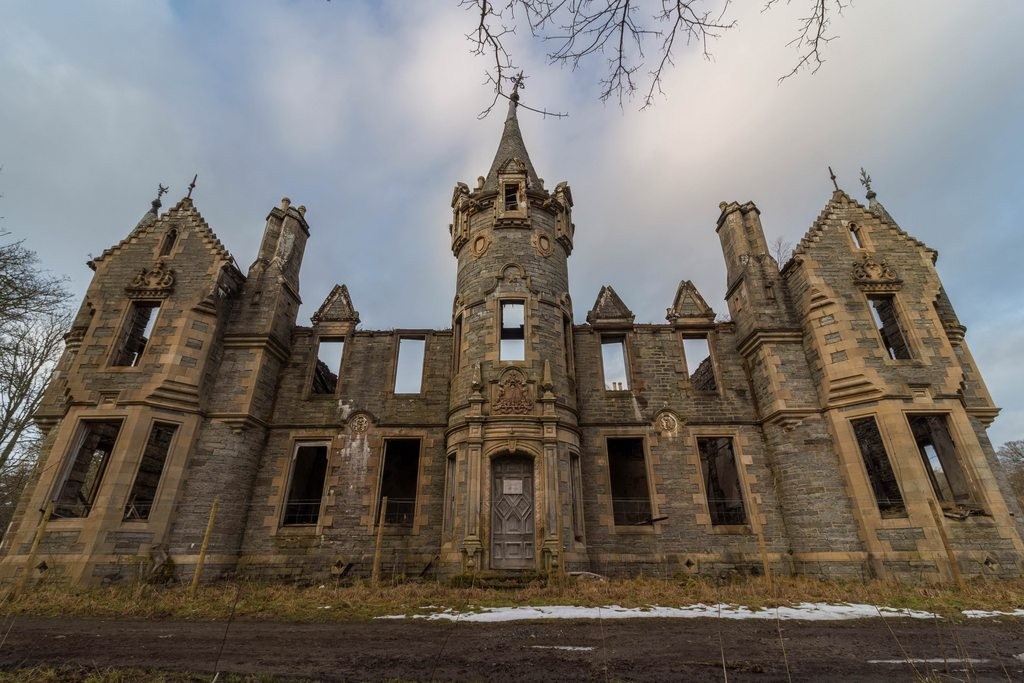 |
| Photo: Derelict Places |
In the early 1850s, the Estate was sold by the then Clan Donnachaidh Chief George Duncan Robertson to General Sir John Macdonald of Dalchosnie. The new owner then demolished the house and built the present house in 1859. The MacDonald Clan Crest and the slogan Per Mare, Per Terras (By sea and land) can still be seen above the main entrance. Incredibly, the house was then taken on by Hugh Tennent, the former owner of Glasgow's famous Wellpark Brewery and lager.
In 1891, after Hugh's death at a very young age, the house and the estate were sold to the then Chairman of the Caledonian Railway Company, James Clark Bunten, the great-grandfather of the present owner. Described as "neither a castle nor comfortable family home", it began to fall into decline during the First World War, as the staff needed to run such a prestigious house became scarce. Then during the Second World War, it was requisitioned to serve as a school for the children of Polish refugees. Largely abandoned, it suffered from further vandalism, including the stealing of the lead from its roofs.
Lying close to Loch Rannoch, there have been a few people keen to restore the once majestic building, however, so far, none of them have met the current owner's own standards. However, it's been stated that they do not wish to see the 'fairy tale' ruin demolished.
3. Slains Castle, near Cruden Bay Aberdeenshire
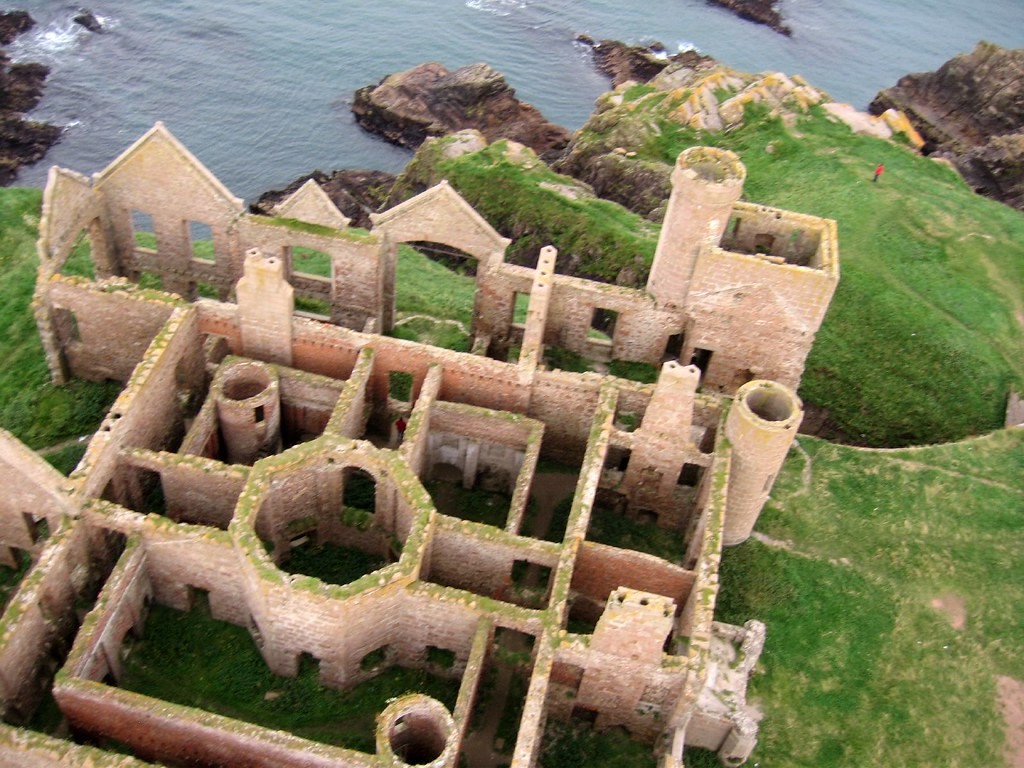 |
| Photo: Flickr |
On the coast of Cruden Bay lie the remains of Slains Castle. The original castle has been reconstructed may time since its construction in 1597 by the Earl of Erroll. The ruin you see today is the inevitable result of the castle’s location and various misfortunes becoming the owners over time. The owners, the Earls of Errol, were an influential family in the Cruden Bay area for many years and prospered after William Hay (the 18th Earl of Errol) married the daughter of King William IV. Over time the Hays fell upon hard times and in 1919 the castle and contents were sold to Sir John Ellerman. He gave up the castle in 1925 and the roof was removed to avoid paying taxes.
The castle is famous for many reasons, partly because it was a place where celebrities were entertained on numerous occasions in the 19th Century. Most notable being, Bram Stoker and it is believed the castle is the inspiration for the setting of the tale in Count Dracula (1897). The Crown (2016 -) fans will also recognize Slains Castle. In Season 1 the castle stood in for Castle Mey when the Queen Mother goes to Scotland.
4. Gartloch Hospital, near Gartcosh Glasgow
Gartloch Hospital was a mental health facility located on the Gartloch Road near the village of Gartcosh in Glasgow, Scotland. It opened in 1896 and was officially closed in 1996. It was managed by NHS Greater Glasgow.
In January 1889 the City of Glasgow acquired the Gartloch Estate for the purpose of building a hospital. A foundation stone for the hospital, which was designed by Thomson and Sandilands, was laid in November 1892. It accepted its first patients in 1896 and was officially opened as the Gartloch District Asylum in June 1897. A nurses' home was completed in June 1900 and a tuberculosis sanatorium opened in December 1902. Bed capacity reached a peak of 830 in 1904. It served as an emergency hospital using hutted accommodation during the Second World War and joined the National Health Service in 1948.
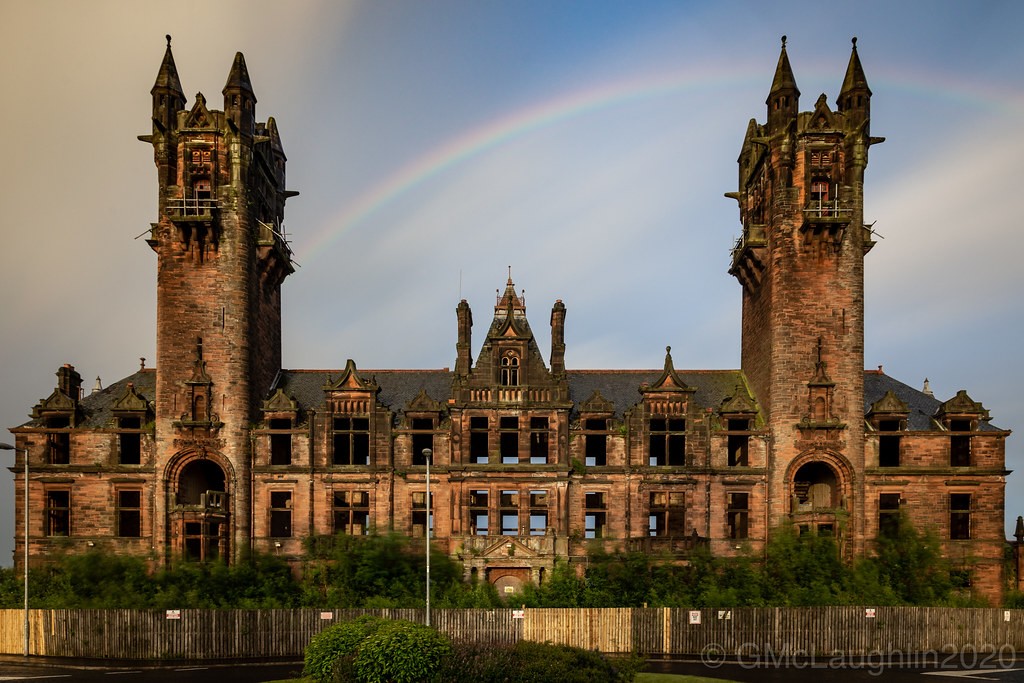 |
| Photo: Flickr |
Robin Farquharson was an inmate at the hospital at the time he joined the Scottish Union of Mental Patients in the early 1970s. After the introduction of Care in the Community in the early 1980s, the hospital went into a period of decline and closed in 1996. Many of the surrounding buildings were subsequently converted into homes or demolished to create Gartloch Village but the Category A listed administration building remains intact but derelict.
5. The lost village on Hirta, St Kilda
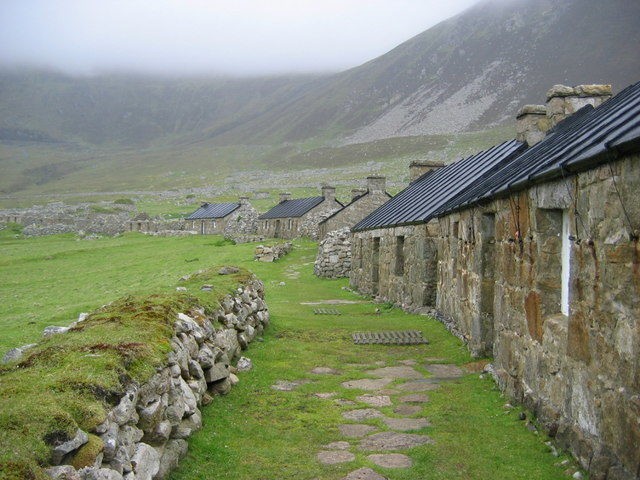 |
| Photo: Abandoned Spaces |
Though ST. Kilda had been inhabited for more than 2,000 years, it’s been abandoned since 1930. When the last residents of the United Kingdom’s remotest islands requested evacuation to the mainland, they left behind a traditional Scottish coastal village that now lies in ruins.
St Kilda is a small North Atlantic archipelago of four islands 40 miles west of its nearest neighbors, Na h-Eileanan Siar, (the Outer Hebrides) in Scotland. Beyond St Kilda, the next land westward is Labrador, Canada. Home to one of the world’s largest colonies of puffins, and a small military installation, this remote outpost was once the base for a thriving community, most of whom lived in the now-ruined village on the island of Hirta.
Stone tools and Bronze Age quarry found on Mullach Sgar, a mountain on Hirta, suggest people had lived on the islands for at least two millennia, if not more. People used small boats to move between the islands and used the surplus of seabirds to their advantage (puffins were supposedly a favored snack). However, the early 20th century saw a gradual erosion of the islanders’ traditional ways of life, which included sheep farming, weaving, and fishing.
Steamships of tweed-buying tourists introduced the Gaelic-speaking islanders not only to the cultural influences of the rest of the U.K., but also previously absent diseases. Many young islanders emigrated, particularly to Melbourne, Australia, where they founded the suburb of St Kilda. Furthermore, a generation of young men were lost in the trenches of World War I, a war that affected the islands directly, albeit briefly, when a German submarine destroyed a naval beacon, the church, and one lamb. After the war, influenza and contaminated farmland cut the population from 73 in 1920 to 36 by 1928.
In 1930, following the death of a young woman from appendicitis and pneumonia—which might not have proven fatal on the mainland—the remaining islanders heavy-heartedly requested to be permanently evacuated to the mainland. Their lives had become unsustainable in the face of modernity and a rapidly diminishing population. The evacuation took place on August 29th that same year, when a ship called Harebell took the remaining villagers to their new homes in mainland Scotland. The villagers left behind a plate of oats and an open Bible in each cottage before boarding the ship. The last former resident of St Kilda, who was evacuated when she was eight years old, died in April 2016.
Today, the islands are a double UNESCO World Heritage Site, for both cultural and ecological reasons due to their human history and globally significant bird colonies. The islands are owned by the National Trust for Scotland, a charitable organization. They’re also home to a small U.K. military installation; a population of Soay sheep, a Neolithic breed that has continued to thrive on the isolated islands; and a population of Boreray sheep, the U.K.’s rarest breed of sheep.
6. The Big Idea, near Irvine
The Big Idea was a science center located in the town of Irvine, North Ayrshire, Scotland. Located on the former Nobel Explosives manufacturing site on the Ardeer Peninsula, a new science and learning center was planned in 2000 by the Millennium Commission, to celebrate the history of invention and inventors.
An estimated £14 million was spent on the construction of the exhibition. After only 3 years of operation, the museum permanently closed in 2003 after a major decline in visitor numbers. 16 years after closure, no plans have been made for the former museum's redevelopment and it continues to lie abandoned on the peninsula.
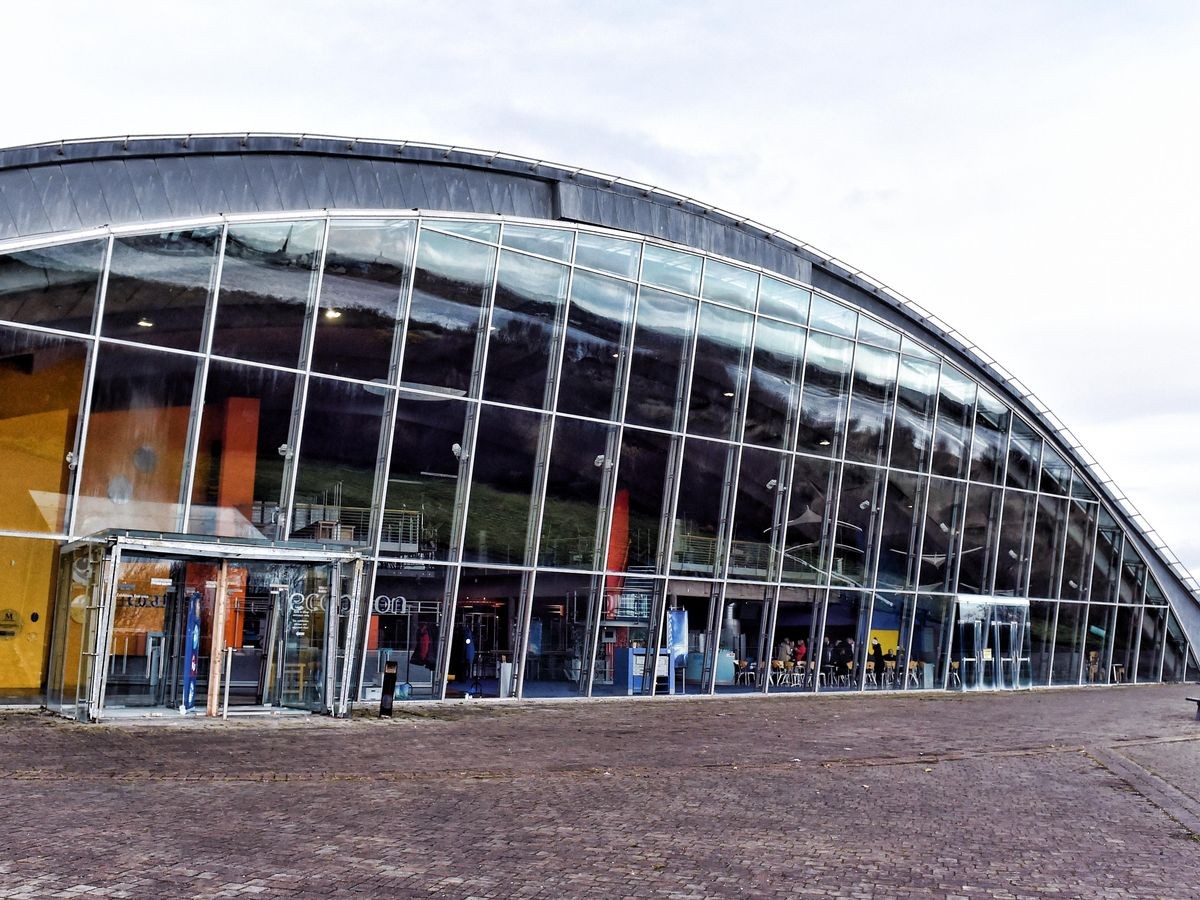 |
| Photo: Daily Record |
As an idea for the new millennium, a museum site was proposed to celebrate inventors and inventions from Scotland and all over the world. The project was created with the help of £5.5million from the Millennium Commission, £5m of European funding, £500,000 from Scottish Enterprise, and £3million of private money. Scottish inventors featured included John Napier, William Murdock, Alexander Fleming, and John Logie Baird.
The museum featured a wide range of facilities for the public. The main museum consisted of five "focal points". These were Power, Control, Materials, Communication, and Mechanisms. The building also contained a sizeable theatre named after Alfred Nobel.
There is a time capsule buried below the reception area of the museum, placed there by students of Ardeer Primary School in June 1999. Access to the facility was via a footbridge, called the 'Bridge of Scottish Inventions'. The bridge was able to change position to facilitate ships passing on the River Irvine. It has remained in the open position since the demise of the complex.
By 2003, the museum was struggling to cover operational costs due to the dwindling visitor numbers. Glasgow Science Centre opened its doors in 2001. This was a larger and more central facility for visitors to the central belt. Brian Donohoe MP stated “The death warrant came around the first day they gave a grant to the science center in Glasgow. People aren’t going to come by the science center in Glasgow to look at a similar facility in Irvine.”
The museum closed its doors in early 2003, after failing to attract sufficient visitor numbers. Since its closure, it has remained relatively untouched due to its isolated location and being protected by surrounding private land. As of 2019, no plans have been made for the facility's future.
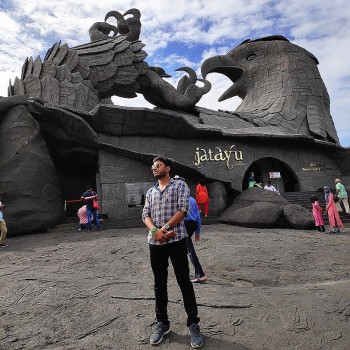 | Explore The World’s Largest Bird Sculpture in India The world’s largest bird sculpture in India took artists 10 years to complete |
 | To A Different World: The Wilderness Beauty of Iceland Through Vietnamese Photographer Setting foot on Iceland, what impresses you most is its incredible scenery and beautiful sight, which was captured through Vietnamese photographer’s lenses. |
 | Over 20 Vietnamese Scientists Listed Among World Top 100,000 Nearly 30 Vietnamese scientists working domestically and abroad have been named in the list of the world's top 100,000 most-cited researchers in all fields of ... |
Recommended
 World
World
US, China Conclude Trade Talks with Positive Outcome
 World
World
Nifty, Sensex jumped more than 2% in opening as India-Pakistan tensions ease
 World
World
Easing of US-China Tariffs: Markets React Positively, Experts Remain Cautious
 World
World
India strikes back at terrorists with Operation Sindoor
Popular article
 World
World
India sending Holy Relics of Lord Buddha to Vietnam a special gesture, has generated tremendous spiritual faith: Kiren Rijiju
 World
World
Why the India-US Sonobuoy Co-Production Agreement Matters
 World
World
Vietnam’s 50-year Reunification Celebration Garners Argentine Press’s Attention
 World
World





